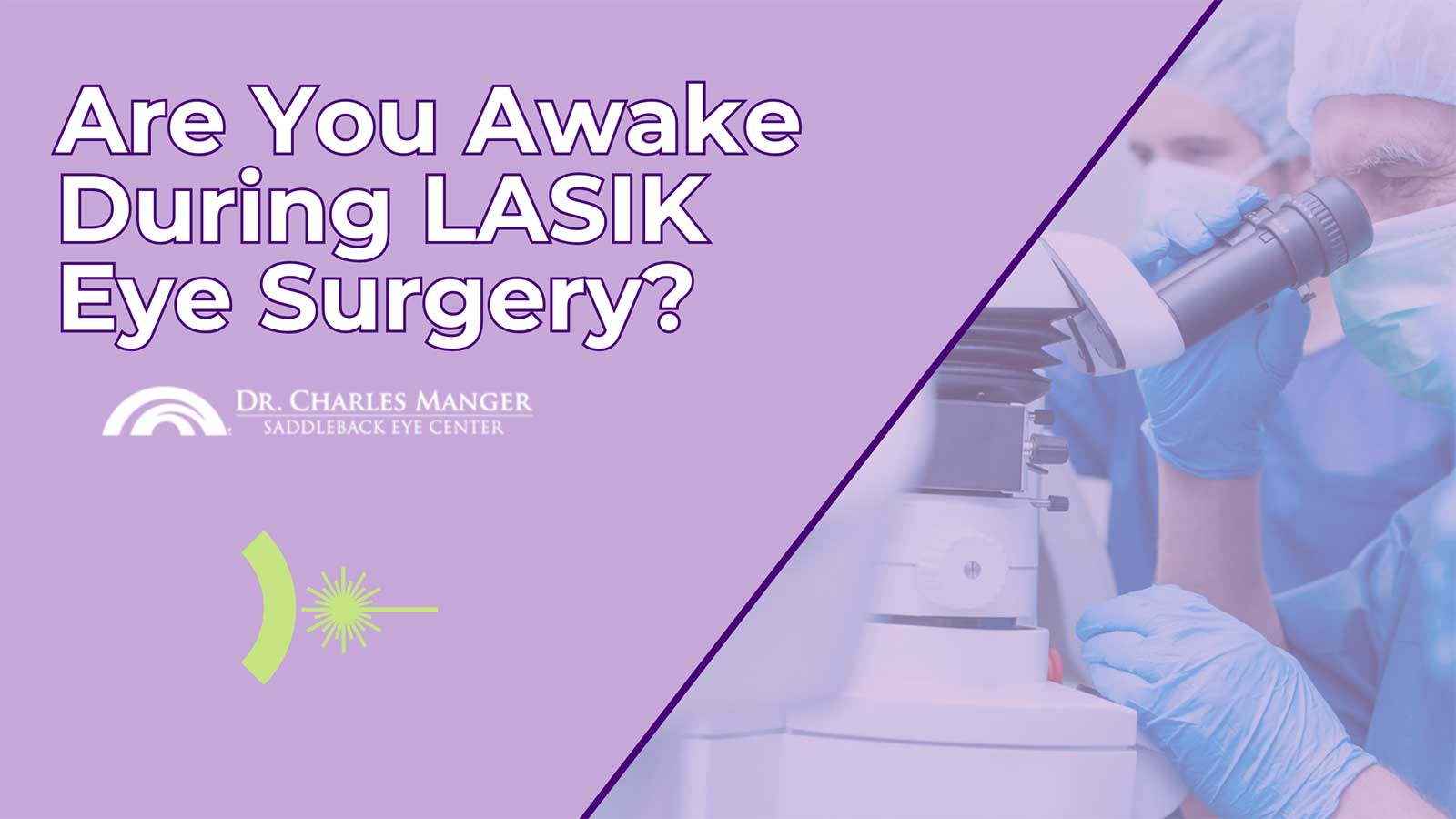As LASIK eye surgery increasingly becomes a byword for visual liberation, a growing number of prospective patients are engaging in a critical dialogue about a key aspect of the procedure: the state of consciousness during the operation. This pivotal query often sits at the forefront of discussions, as understanding what happens during LASIK can significantly impact a person’s decision to undergo surgery. This article is designed to methodically address the fundamental question, ‘Are patients awake during LASIK surgery?’, and in doing so, it aims to provide a comprehensive and enlightening overview.
By delving into the nuances of LASIK, from the initial consultation to the outcome, we aspire to set a foundation for a deeper, more understanding of what the surgery entails. We will explore the reasons behind the patient’s state of consciousness, the role of anesthesia in the procedure, and how these factors contribute to the overall safety and efficacy of LASIK. Through this in-depth exploration, our goal is to empower you with knowledge, thereby enabling a well-informed decision about this life-altering vision correction surgery.
Reasons for Staying Awake During LASIK
If you have ever undergone any medical procedure, you probably experienced the tremendous relief of «sleeping through» the intervention. However, LASIK surgery is vastly different from other operations in this regard. Here are some of the reasons why:
Efficiency and Surgical Precision
LASIK’s short duration, typically around 10 to 15 minutes, with the laser application itself lasting only about 30 seconds per eye, is a key reason for keeping patients awake. This efficiency not only speeds up the process but also minimizes risks associated with longer surgeries. Staying awake allows patients to cooperate with the surgeon, ensuring the laser is precisely targeted, which is vital for the success of the procedure.
Minimizing Discomfort with Local Anesthesia
LASIK’s reputation for being relatively pain-free hinges on the effective use of local anesthesia, specifically numbing eye drops. These drops mitigate any discomfort, making deeper sedation unnecessary. The ability to stay awake and alert with minimal discomfort makes the process smoother and more comfortable for the patient.
Crucial Role of Patient Cooperation
Patient cooperation is essential during LASIK, as the procedure often requires patients to focus on a target light. This active participation is crucial for the laser to accurately reshape the eye, a precision task that is unfeasible under general anesthesia. By staying awake, patients can respond to real-time instructions, contributing to the procedure’s accuracy.
Accelerating Post-Procedure Recovery
The use of anesthesia, allowing patients to stay awake, leads to a much quicker recovery compared to general anesthesia. Patients can often resume normal activities, like working on a computer or watching TV, within a day or two, though they should avoid strenuous activities for at least a week. This swift recovery is a significant advantage of staying awake during LASIK.
Advantages of Home Recovery
The ability to go home on the same day is another benefit of staying awake during LASIK. Recovery in the comfort of one’s home is more relaxing and less stressful than a hospital stay, which might be necessary after procedures involving general anesthesia. This home-based recovery is conducive to a faster and more comfortable healing process.
What Happens During LASIK Surgery?
LASIK, or Laser-Assisted In Situ Keratomileusis, is a type of refractive surgery designed to correct vision issues such as myopia (nearsightedness), hyperopia (farsightedness), and astigmatism. The procedure involves reshaping the cornea, the clear front part of the eye, to allow light entering the eye to be properly focused onto the retina for clearer vision.
During LASIK, a LASIK eye surgeon creates a thin flap in the cornea using a specialized laser. The surgeon then folds back the flap to access the underlying corneal tissue (stroma) and uses an excimer laser to reshape this tissue. This reshaping process is key to correcting vision. After the cornea is reshaped, the surgeon lays the flap back in place, where it heals without the need for stitches.
What Happens if I Blink During the LASIK Procedure?
To alleviate concerns about blinking during LASIK, eye surgeons utilize a lid speculum to gently keep the eyelids open, effectively preventing any involuntary blinking. This simple yet effective tool is part of standard LASIK procedure protocols, ensuring that the eyes remain open throughout the surgery. Moreover, LASIK technology has evolved to include advanced eye-tracking systems.
These systems are capable of detecting even the slightest unwanted eye movements, allowing the laser to pause automatically. This feature enhances the precision and safety of the procedure, ensuring that natural reflexes like blinking or minor eye movements do not compromise the surgery’s success.
How Can I Stay Calm During Lasik Surgery?
Staying calm during LASIK surgery is a common concern. Clinics often acknowledge patient nervousness and work to ensure comfort throughout the process. This includes continuous communication and support from the medical team.
On the day of the surgery, a mild sedative may be provided to help relax the patient. This approach, combined with a reassuring environment, aims to alleviate anxiety and facilitate a smooth surgical experience.
What Anesthesia is Used in LASIK Surgery?
In LASIK eye surgery, the type of anesthesia used is a crucial component to ensure the patient’s comfort and safety. The procedure typically involves the following anesthetic approach:
Type of Anesthesia
Local anesthesia is the preferred choice in LASIK surgery. This approach involves the use of numbing drops that are applied directly to the eye. The purpose of these drops is to eliminate any sensation of pain during the procedure, making the experience as comfortable as possible for the patient.
Benefits of Local Anesthesia
Compared to general anesthesia, local anesthesia is considerably safer for a procedure as quick as LASIK. It avoids the deeper effects of general anesthesia, such as loss of consciousness and significant suppression of bodily functions.
Risks of General Anesthesia
While general anesthesia is much safer now than in the past, it inherently carries certain risks, especially for individuals with specific health conditions. General anesthesia can suppress:
- Consciousness
- Breathing rate
- Heart rate
- Nervous system function
Concerns for Specific Conditions
Patients with conditions such as diabetes, obesity, and high blood pressure may face increased risks with general anesthesia. Moreover, being fully sedated would prevent the doctor from monitoring the patient’s responses during the delicate procedure of LASIK, which can be critical for its success.
The use of local anesthesia in LASIK highlights a tailored approach that prioritizes patient safety, comfort, and the specific needs of this quick yet delicate eye surgery.
What to Expect After LASIK Eye Surgery
Post-LASIK, patients enter a recovery phase characterized by certain expected experiences and essential care practices. Understanding what follows the surgery helps in preparing for a smooth and effective healing process.
Immediate Post-Surgery Vision
After LASIK, patients often report temporary visual disturbances like haziness or blurriness. This is a typical part of the healing process, as the eye adjusts to the changes made during the surgery. Generally, these symptoms are short-lived, clearing up within a few hours to a day. This period is critical for the eye to stabilize and begin the healing process effectively.
Follow-up and Healing Assessment
The follow-up visit after LASIK, usually scheduled for the day after the surgery, is essential for evaluating the healing process. During this appointment, the surgeon checks for any immediate complications and assesses the initial results of the procedure. This visit is also an opportunity for patients to discuss any concerns and receive guidance on the next steps in their recovery.
Post-Operative Care Instructions
Following LASIK surgery, adherence to the surgeon’s post-operative care instructions is vital. This includes the use of prescribed eye drops to prevent infection and reduce inflammation, helping the eye heal properly. Patients are also strongly advised to avoid rubbing their eyes for a few weeks post-surgery, as this could disrupt the healing of the corneal flap.
Activity Restrictions
Post-LASIK patients are advised to avoid certain activities that could impact the healing process. This includes swimming and engaging in contact sports, as such activities increase the risk of eye injuries or infections during the crucial healing phase. The duration of these restrictions can vary, and patients are encouraged to follow their surgeon’s specific recommendations.
Vision Improvement and Variability
Many patients experience remarkable vision improvements after LASIK, often achieving 20/20 vision or better. However, the degree of improvement varies among individuals, influenced by factors such as the degree of refractive error prior to surgery and the patient’s overall eye health. Patients should have realistic expectations and discuss their specific situation with their surgeon.
Conclusion
In conclusion, remaining awake during LASIK is crucial for the procedure’s success and patient safety. Local anesthesia, the quick nature of the surgery, and active patient engagement all play pivotal roles in this approach. With continuous advancements in technology and surgical methods, LASIK upholds its reputation as a highly effective and sought-after vision correction option, offering comfort and precision for those seeking improved eyesight.



